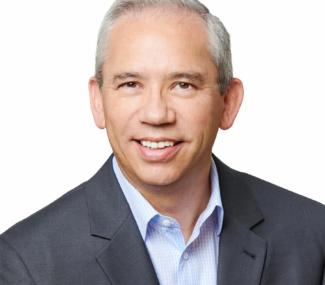Applying a 19th Century Innovation to Today’s Talent Crisis

“The public school system is designed to produce a workforce for an economy that will not be there.”
– Alvin Toffler, 2007
In the late 19th century, John D. Rockefeller had a vision for the mass availability of affordable oil and its byproducts. The challenge he faced was that his existing suppliers could neither efficiently nor flexibly provide the quality resources needed by Standard Oil. He solved the problem by vertically integrating his supply chain. The business model took 100 years into the Industrial Age, Alvin Toffler’s Second Wave, to invent. Today, it is one that can provide a model for solving current challenges.
Approximately 50 years into the Information Age, Toffler’s Third Wave, our institutions face a similar supply chain challenge. They cannot acquire the volume of quality resources they require efficiently or flexibly. Today, these “resources” are people — in particular, people with STEM (science, technology, engineering, and math) skills.
Of course, humans aren’t fungible “resources.” That is a Second Wave mindset. For the purposes of this article, we refer to people as “resources” in a Third Wave sense. People are unique, capable, empowered, and evolving workers whose skills are as, if not more, necessary than the technology we use.
Many Information Age companies are far along in their digital transformations. The general society, however, is still transitioning. This is due largely to de-synchronization among societal institutions. In particular, most of our educational institutions are failing to keep up with the demand for STEM-capable talent.
Some companies have tried to resolve this supply-and-demand imbalance by importing skills from outside the country. (The H1B Visa demand backlog is proof.) Educational institutions have tried incremental innovations like magnet schools or demographic-focused programs to attract valuable learners. Very few of these incremental measures are keeping up with the demand of our rapidly evolving Third Wave economy. Success is dependent on skilled knowledge workers and it’s become remarkably clear that our educational processes need re-invention.
External Disruption
It’s not that our educational institutions are unaware of the rising demand for STEM professionals. From pre-school through higher education, many schools are working to meet the need. The problem is that their speed and degree of change are not keeping up with demand. It’s a challenge we’ve seen repeated across history — it’s hard to create disruptive innovation internally.
This is where Rockefeller’s vertical integration model comes in. We see an opportunity for a Second Wave solution being used to solve a Third Wave problem.
Companies that need a capable workforce are losing patience with traditional suppliers; they are fighting over a small pool of degreed or certified talent (“finished goods” from suppliers) who are ready for the workforce. Because this talent is so critical to their success, vertically integrating their human resource supply chain, to exert influence much closer to the “raw materials” stage, looks like a viable option. Employers would participate in the education process to increase the size of the pool of qualified talent. Some studies suggest this needs to be during junior high school or earlier.
Just as was the case when Rockefeller vertically integrated the Standard Oil supply chain, the efforts of today’s companies will disrupt the institutions that control the talent pipeline. As that happens, entrenched stakeholders, traditional practices, and hardened financial flows would be at risk of changing significantly or even being eliminated from the supply chain. It is important to note that today’s vertical integration is unlikely to replicate the total ownership model; rather, it will be about exerting influence, public-private partnerships, and leveraging foundations.
The Reimagined Human Resources Supply Chain
Organizations that build their own STEM talent resource supply chain can optimize the design to fit their specific (commercial, military, or government) needs. While the details of their designs will vary, it’s certain that reimagined educational institutions will provide holistic learning built on a technology foundation and complemented by analog, social, and physical elements. The characteristics of reimagined education are likely to include:
Demand-Driven
The educational planning process will follow the market demand for skills. This doesn’t mean forcing students into tracks. It means keeping educators focused on projected market needs so they have the timeline to ‘produce’ the talent needed and students can make informed decisions based on potential market value.
Customized
Technology allows educators to tailor nearly everything to each student’s needs, from learning style to progress speed, to curriculum and content, to location and time.
Well-Rounded
There’s no doubt that STEM skills are in high demand. Nonetheless, employers need people capable of continuous learning and critical thinking, which often comes from classical liberal arts training. Non-traditional soft skills like leadership, collaboration and teamwork, problem-solving, and communication will be part of the curriculum, as will life skills like financial management and learning the subtleties of social interactions.
Experiential
A curriculum optimized for market demand would include significant internship and experiential learning elements to allow students to put concepts into practice and help validate their choices.
Skill-Centric
Given the influence of customization, the definition of what constitutes a degree will change. Degrees themselves can be customized. They also will evolve to become ‘umbrella’ programs comprised of many certifications. Those specifics will help employers understand a graduate’s skills mix so they’re more likely to align that individual to specific roles for which they’re best suited. We’re getting a glimpse of this future today when meaningful certifications like Amazon Web Services’ (AWS) Certified Solution Architect or Salesforce Certifications increase marketability and income, regardless of one’s diploma.
Lifelong Learning
The education system will flex to accommodate students who follow a chronological path as well as those who re-enter the ‘human resources supply chain’ to acquire or update their skills. Accumulating degrees and certifications will become a life-long process as market demand evolves and the half-life of specific skills becomes shorter and shorter.
Preparing for the Future
The differences between this future education system and the one we know today suggest the need for disruptive change. And history suggests that the likelihood is low that these changes will come from within existing institutions. We can expect that the process of educating the workforce to meet market demand will be driven by those who need these human resources most, and most urgently.
It is prudent for those on the demand side (i.e., commercial, military, and government) to explore ways to reach further back into the human resource supply chain or, more radically, design their own. Organizations whose success depends on emerging skillsets cannot remain passive recipients of the supply “the system” generates. Rather than fighting over a limited selection of candidates, they must actively influence growing the talent supply.
___
The IBM P-Tech (Pathways in Technology Early College High School) program is one example of how an organization is proactively producing the human resources they need.
___
For those on the supply side (i.e., pre-Kindergarten through Ph.D. and continuous learning institutions), it’s imperative to recognize that our economic institutions are reaching their breaking point. It’s probable that they will no longer wait for reform. Expect to see them apply direct pressure on educators to effect change or to circumvent existing institutions altogether, opting instead to institute their own version of vertical integration.
History says that it will be those on the demand side — organizations whose success requires a rich pipeline of resources — that will dictate future state design. It’s up to existing, traditional educational institutions to decide whether they will be part of that process or allow disruption to relegate them to the status of an outside observer.
- Categories
- Futures and Foresight
- Workforce of the Future

 About the Authors
About the Authors